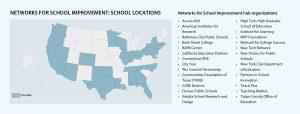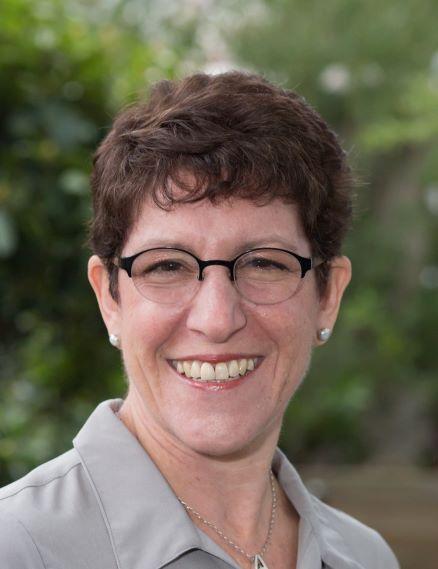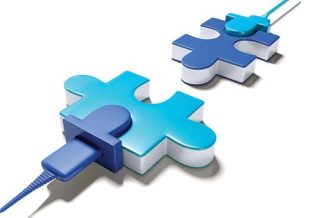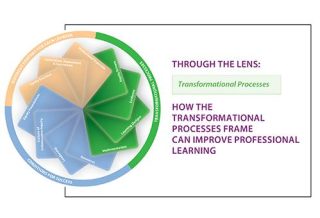FOCUS
Networks forge a path to school improvement
By Lynn Olson
Categories: Continuous improvement, Equity, Improvement science/networks, Standards for Professional LearningApril 2023
When educators work collaboratively to improve their practice, they build their capacity to achieve equitable and excellent outcomes for all students. As Learning Forward’s Standards for Professional Learning (Learning Forward, 2022) emphasize, educators’ continual learning is key to improving students’ learning. When supported and empowered to do so, educators who know their students and settings are best positioned to identify solutions that meet their particular needs.
But how do educators know where to start? And how will they know if the changes they make, which may be local and small scale, are actually an improvement?
Continuous improvement methods, widely used in fields such as medicine, can help educators identify and try out adjustments in practice, known as “change ideas,” which contribute to better outcomes and more equitable systems for students. As teachers and leaders reflect on their learning and share what’s working, educators in other schools and systems can learn about them, try them out, and adapt them to their contexts. Continuous improvement approaches enable cycles of professional learning and innovation that spiral out from one context to another.

Since 2018, the Bill & Melinda Gates Foundation has invested in 24 organizations across the United States to support networks of schools to use continuous improvement methods to advance equity in education — with the specific aim to increase the number of Black and Latino students and students experiencing poverty who earn a high school diploma, enroll in college, and are on track for college success.
This issue of The Learning Professional elevates the voices of educators from the Gates-funded Networks for School Improvement as they describe what they have learned from their experiences. Many of their examples — from how to center equity to the importance of elevating teacher leadership and student voice — matter for all learning professionals, even those who are not specifically using continuous improvement methods.
About Networks for School Improvement
The Networks for School Improvement support educators to use data to adapt research- and evidence-based practices to their specific contexts through cycles of continuous inquiry. Through peer-to-peer learning in cross-school and cross-district networks, educators share what they are learning with each other and with the broader field. While no two networks are alike, they use some common approaches that can be helpful to anyone interested in building educators’ knowledge and capacity to improve instructional practices and school processes.
- Understand the system that is producing the current inequitable results through careful qualitative and quantitative data analysis, paying particular attention to outcomes for students furthest from opportunity.
- Identify the underlying or root causes that are producing the variation in results through tools like fishbone diagrams and Five Whys.
- Create a theory for how to improve the current system and test evidence-based change ideas or sets of change ideas in practice so that teams can identify the most promising ideas to scale and spread. Teams do this through structured cycles of inquiry, most typically PDSA cycles, in which teams:
- Plan: Plan the change they want to try, predict what will happen as a result, and decide what data to gather to test their hypothesis;
- Do: Test their research-based change idea in practice;
- Study: Reflect on what they have learned using the data they have gathered; and
- Act: Consider whether to adopt, adapt, or abandon a change idea based on the evidence.
Inquiry cycles can last for a few days to several weeks, with educators engaging in multiple cycles throughout the academic year and, potentially, multiple change ideas that they want to test.
The networks have applied these methods to a range of specific strategies, all in the service of the ultimate goal of educational equity. Some have focused on improving specific literacy or math instructional practices, while others have focused on creating more supportive school environments, where students feel connected to adults, each other, and the school community.
Still others have homed in on evidence-based strategies and processes that support students to apply, enroll, and persist in colleges that are the best fit for them. The composition of the network teams varies according to their specific strategies and goals — for example, some are composed of grade-level or content-area teachers, while others include school counselors and external service providers.
All of the networks and network members included in this issue share an unwavering commitment to designing more equitable systems, a dedication to continuous improvement, and the use of indicators that predict students’ long-term outcomes and success.
While much of the work described in this issue focuses on intermediate outcomes — such as how to increase student engagement, attendance, freshmen grade point averages, and college-application rates — these indicators correlate strongly to longer-term outcomes, including improved high school completion and college enrollment and persistence rates.
Inspiration for implementation
The articles in this issue provide real-world examples of professional learning strategies and continuous improvement practices that many schools and communities want to implement but may not have experience with, including:
- Protocols and processes to help center equity and unearth educator beliefs and biases;
- Methods for creating space and conditions for educator collaboration and risk-taking;
- Strategies for supporting teacher leadership and agency;
- Ways to develop mentoring and coaching capacity and expertise;
- Tools for elevating student voice and focusing on the whole student, using asset-based frameworks; and
- Routines, conditions, and processes to support data-driven decision-making, including “lightweight” measures that can be used at the classroom and school levels.
These strategies reflect core components of high-quality professional learning and all 11 Standards for Professional Learning. As with all meaningful learning, continuous improvement approaches require a deep, ongoing commitment to building educators’ capacity for inquiry, growth, and change.
As the standards remind us, there is no single, isolated strategy that will improve educational practice and student outcomes. The way forward lies in a systems approach to incremental progress where we try, test, and learn from one another.
Download pdf here.
No single, isolated strategy will improve educational practice and student outcomes. The way forward lies in a systems approach where we try, test, and learn from one another. #TheLearningPro Click To TweetThe best solutions for students come from diverse voices of educators
The Bill & Melinda Gates Foundation is thrilled to support this special issue of The Learning Professional, which shares stories from our Networks for School Improvement grantees. We are inspired by the educators in these networks, who are working together to use research and data to identify, address, and solve common problems that keep young people, especially those who have traditionally been furthest from opportunity, from reaching their full potential.
We launched the Networks for School Improvement portfolio in 2018 because we know that the solutions that work best for students are ones that marry research with the wisdom and experience of the educators who know their students’ talents, interests, and needs. One-size-fits-all solutions rarely fit at all. The best solutions come from bringing together diverse voices of educators with different expertise and from different contexts.
Networks for School Improvement grantees seek to improve outcomes for Black and Latino students and students experiencing poverty by implementing structures and routines that empower practitioners to test and adapt evidence-based practices to their classrooms and schools, then use actionable, meaningful, and relevant data to understand how they work for students.
In many cases, educators are partnering directly with students to create classrooms and schools that are motivating, engaging, and equitable. And like you, they’ve done this deep work under the challenging circumstances of the last few years. I’m humbled by their commitment to their students and to each other.
We hope that you, like our team at the foundation, discover ways to implement and adopt improvement approaches in your practice so that your educators and students learn and thrive.
Vivian Mihalakis is a deputy director at the Bill & Melinda Gates Foundation.
References
Learning Forward. (2022). Standards for Professional Learning. Author.

Lynn Olson (lynnamyolson@gmail.com), guest editor of this issue of The Learning Professional, is an independent consultant and president of Lynn Olson Strategies who has written previously about the work of the Gates-funded Networks for School Improvement.
Categories: Continuous improvement, Equity, Improvement science/networks, Standards for Professional Learning
Recent Issues
TAKING THE NEXT STEP
December 2023
Professional learning can open up new roles and challenges and help...
REACHING ALL LEARNERS
October 2023
Both special education and general education teachers need support to help...
THE TIME DILEMMA
August 2023
Prioritizing professional learning time is an investment in educators and...
ACCELERATING LEARNING
June 2023
Acceleration aims to ensure all students overcome learning gaps to do...











